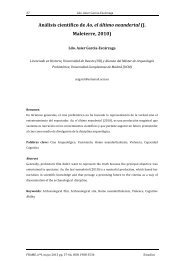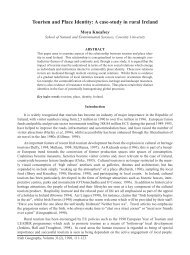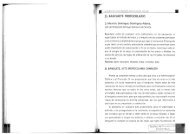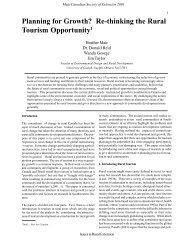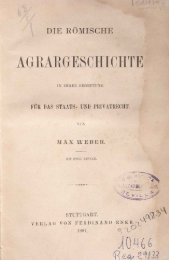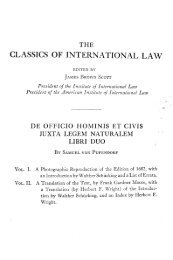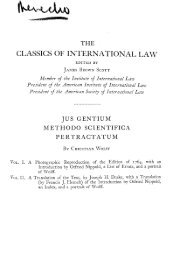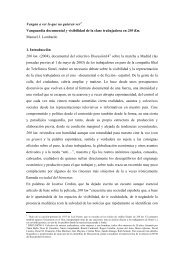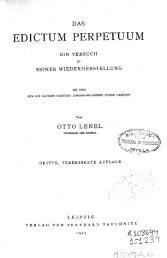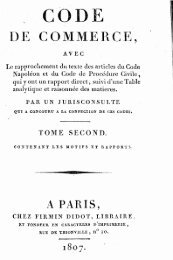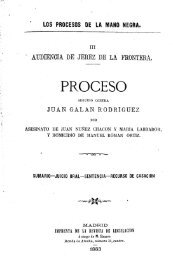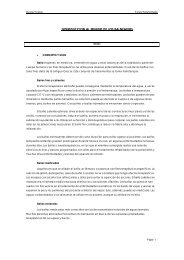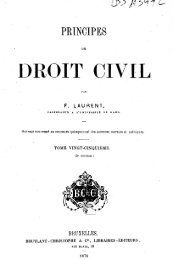Measuring Sustainable Tourism Development in Remote Rural ...
Measuring Sustainable Tourism Development in Remote Rural ...
Measuring Sustainable Tourism Development in Remote Rural ...
Create successful ePaper yourself
Turn your PDF publications into a flip-book with our unique Google optimized e-Paper software.
In L<strong>in</strong>doso/Soajo some 57% have been outside the area for more than one year. This<br />
is mostly due to the fact that this region has traditionally been one of the largest<br />
exporter of reserve labour to <strong>in</strong>dustrialised European countries. Studies have shown<br />
that these communities when confronted with little if any opportunities for employment<br />
that, <strong>in</strong>stead of allow<strong>in</strong>g fear and panic to tear the villages apart, or, on the other<br />
extreme, br<strong>in</strong>g<strong>in</strong>g the village together as a community, the young people were raised to<br />
f<strong>in</strong>d solutions to their economic problems not through political pressur<strong>in</strong>g and collective<br />
action but through <strong>in</strong>dividual <strong>in</strong>itiative and emigration (Graham, 1979).<br />
Table 7f shows that the majority (85%) of the residents <strong>in</strong> Svaneke has lived outside<br />
the area for more than one year. This is closely related to the level of education <strong>in</strong> the<br />
village. It you wish to be educated above secondary school you have to go to school <strong>in</strong><br />
the other end of the island and if you wish to graduate you need to move from the<br />
island.<br />
Conclusion<br />
As relevant literature has suggested, many are the communities <strong>in</strong> remote areas that<br />
have compromised the needs of the resident community to achieve tourism<br />
development goals. While <strong>in</strong> the short term such compromises at the expense of local<br />
<strong>in</strong>terests may seem appropriate courses of action, there may be negative<br />
repercussions at a later date (Gill and Williams, 1994: 218). The effect of these<br />
changes is the decl<strong>in</strong>e and erosion of traditional communities and life styles and an<br />
alteration of the whole economic and social system <strong>in</strong> the rural areas. Communities<br />
are no longer cohesive entities, and this <strong>in</strong> turn has an effect on both the viability of and<br />
participation <strong>in</strong> leisure activities (Arnott and Duffield, n.d.). This case study has<br />
exam<strong>in</strong>ed residents´ perceptions of the impacts of tourism <strong>in</strong> communities <strong>in</strong> two<br />
peripheral regions of Europe. A quantitative survey was carried out <strong>in</strong> order to<br />
measure the perceived attitudes of tourism development <strong>in</strong> specific communities <strong>in</strong><br />
each of the regions. The survey results show that the attitudes of residents has been<br />
most effected where tourism development is more advanced, and suggests how the<br />
expectations of tourism will <strong>in</strong>evitably alter communities desperately seek<strong>in</strong>g to<br />
improve the quality of life of people liv<strong>in</strong>g <strong>in</strong> remote areas and attempt to put an end to<br />
the rural exodus.



